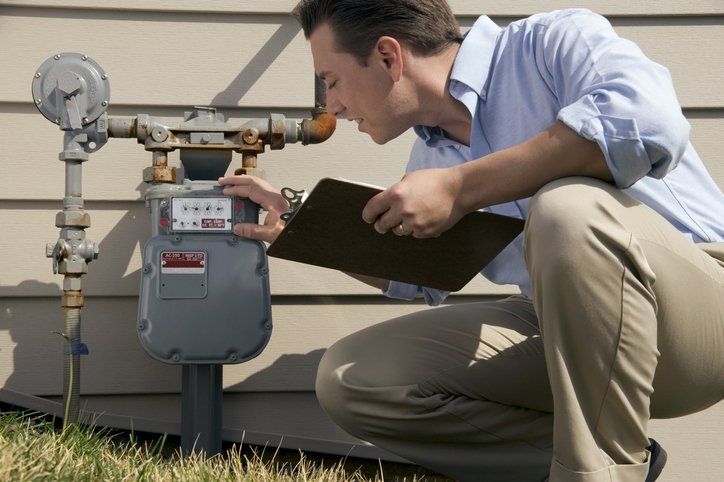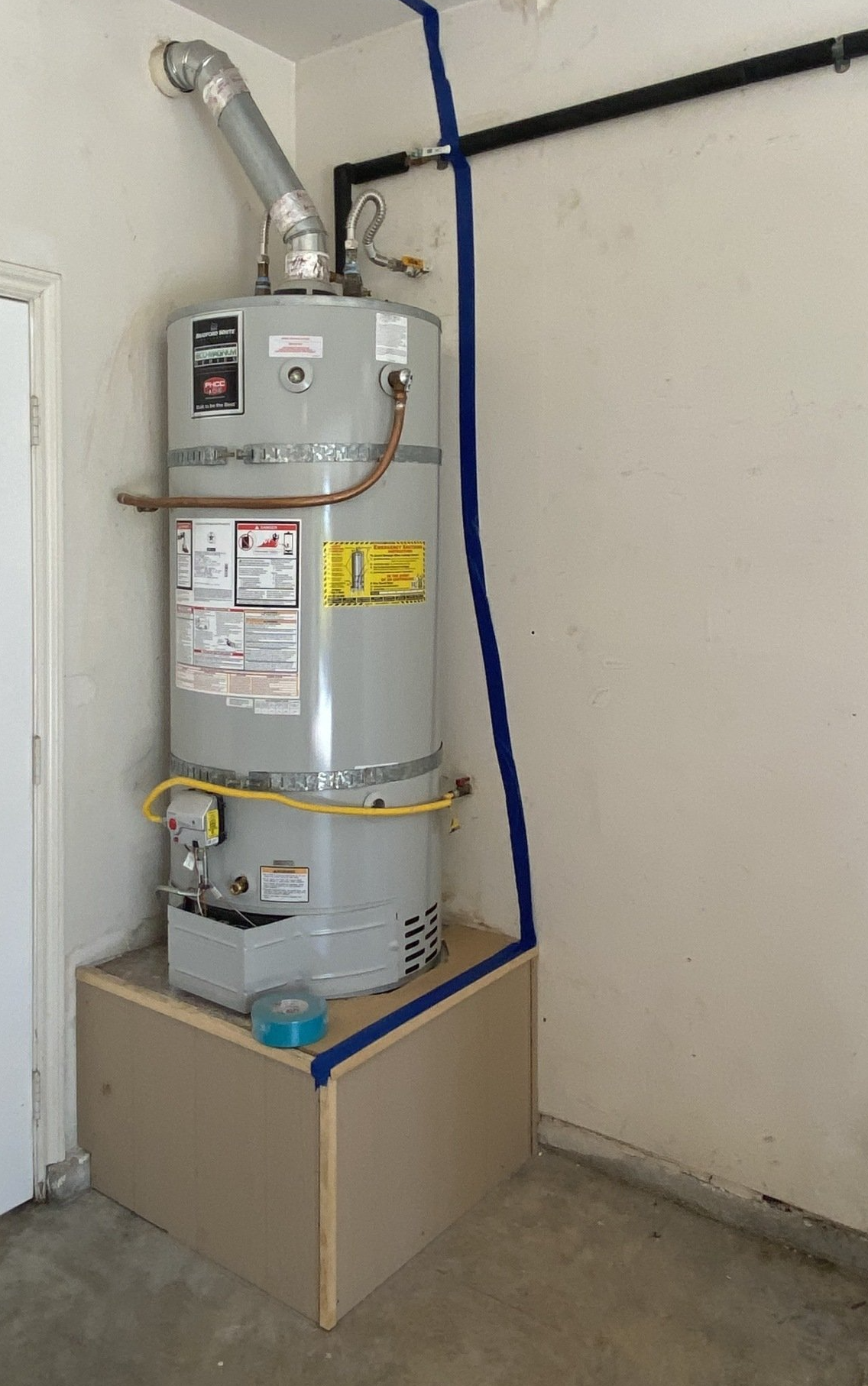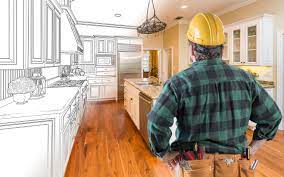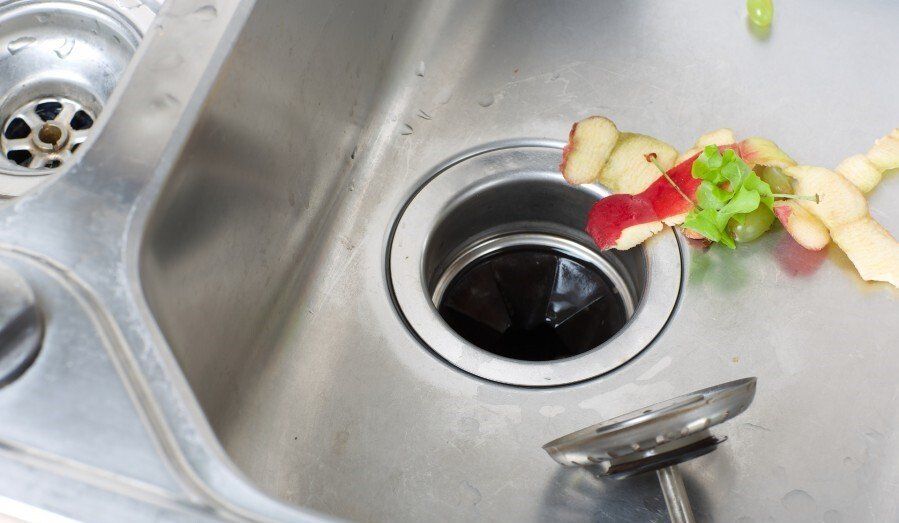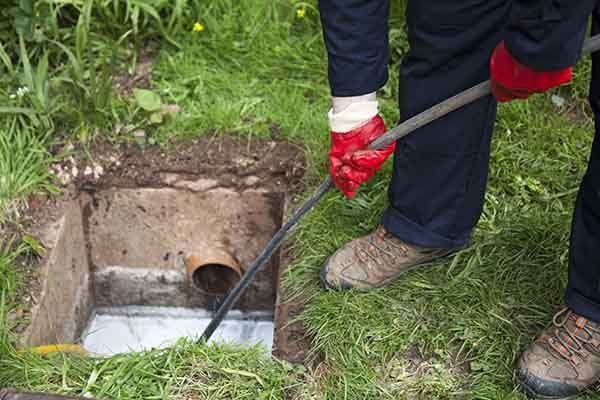The Benefits of Using Copper Piping for Plumbing
fmmike • June 28, 2016
Discover how converting your plumbing systems to copper can save you time and money.
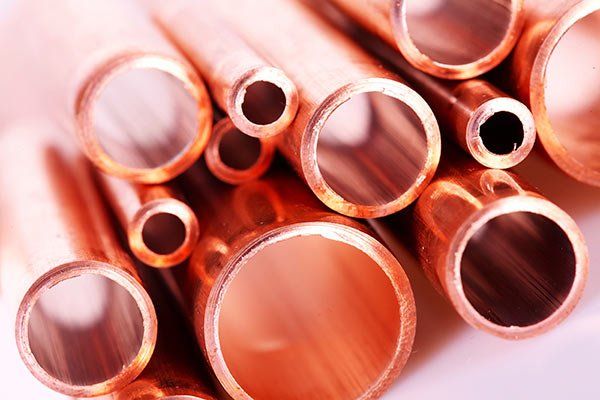
The pipes inside your home have a crucial role in bringing to you necessary gas and water. For this reason, the piping material you use is extremely important, and copper has many outstanding benefits.
Durable
When you install your pipes, you probably want to make sure they last as long as possible. Since pipes often are places behind the walls, getting to them in case of any problems can be a huge hassle. Fortunately, when it comes to pipes that supply water, copper piping
can often come with a warranty for 50 years.
Furthermore, any extreme pressure that may occur will generally not have a strong impact on the copper pipes as it may on other materials. Also, while you should do your best to keep your pipes from freezing, copper can handle being frozen and thawed out better than other pipes.
Safer
Since copper pipes don't need to use volatile organic compounds when being installed, they are usually safer for the environment. Moreover, since copper does not normally burn, a fire typically won't cause them to produce gas that may be dangerous to your health. Additionally, copper does not burn easily, so that decreases the chances of the pipes spreading fire through your home.
Economical
The durability of copper piping and the protection it can offer may also benefit your budget. You won't need to spend your hard earned money on repairs.
Copper pipes have many great advantages. Call F and M Plumbing at 626-296-1060 to learn more about copper piping.
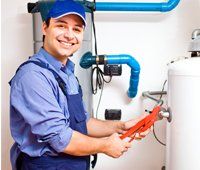
Your garbage disposal is the trash can of your plumbing system. At least, kind of. It can grind, liquify and mash your leftovers and do what the kitchen sink can't on it's own — carry the ground-down mush away. Even though your disposal seems like it should eat up just about any kitchen waste that you have to jam down it, some foods (and other food-related items) are no-go's. Knowing what to nix from your disposal list can save your sink's plumbing and stop potential problems from happening. Carefully choosing what goes down the disposal drain may save your system and extend its life. Before you start scraping your plates into the garbage disposal, take a look at what you can and can't empty into it. Lemon Peels These seem hard and potentially disposal-clogging at best. But they aren't on the "don't throw" list. Cut up lemon peels can actually help to clean your disposal out. The citrus scent adds a fresh smell and is the perfect end to your disposal cleaning cycle. A word of caution before tossing all your peels into the disposal — avoid adding too many. One finely chopped or grated peel will do. And make sure to add plenty of water when you run the disposal. Ice Why would anyone want to get rid of ice by putting it down the disposal? For the most part, they wouldn't. But that won't stop some home owners from adding ice to their sink's garbage disposal. While ice isn't technically a 'food', it is something that some people toss down the disposal. And for a very good reason. Adding ice to your garbage disposal can help to keep it in working order. As the disposal grinds the ice, it cleans and sharpens the blades. Bones They may be hard like ice, put poultry or meat bones won't grind the gunk off of the blades in the same way. Ice melts and easily goes down the drain. Bones won't do the same, and end up spinning around your disposal. And that's the best-case scenario. It's possible that the bones left over from your dozen chicken wings, turkey dinner or bone-in steak will spin and clog your disposal. Coffee Grounds The may seem small and innocent, but coffee grounds are a major no-no for your garbage disposal. Even though they may start going down the drain, the gunky grounds tend to clump together and can cause clogs. You may have read a blog, book, magazine article or some other supposedly helpful advice column that suggested using a coffee grounds mixture (usually made with baking soda) to deodorize your garbage disposal. This type of cleaning option mat be chemical-free, but it can also cause clogs and jams at the bottom of your disposal and into the drain. Pits Your peach pits don't belong in the garbage disposal. The hard nuggets that are left over from eating the soft, squishy fruit won't fare well in your kitchen's plumbing. Like poultry and meat bones, pits are too dense for your disposal to grind up. Again, the best-case scenario here is that they spin and spin some more. But it's more likely that they'll clog or damage your disposal. Grease The fatty leftovers from frying chicken or cooking a hamburger needs to go into a glass or metal container to cool before you cover it and throw it out in the garbage. That is the garbage can, and not in the garbage disposal. When fat and grease cool it hardens. This happens in a jar, in your sink or in your plumbing. Hardened grease will clog your drains, causing major plumbing problems. Did you accidentally toss a chicken bone down the disposal? Is grease gunking up your pipes? F & M Plumbing provides residential garbage disposal repairs.
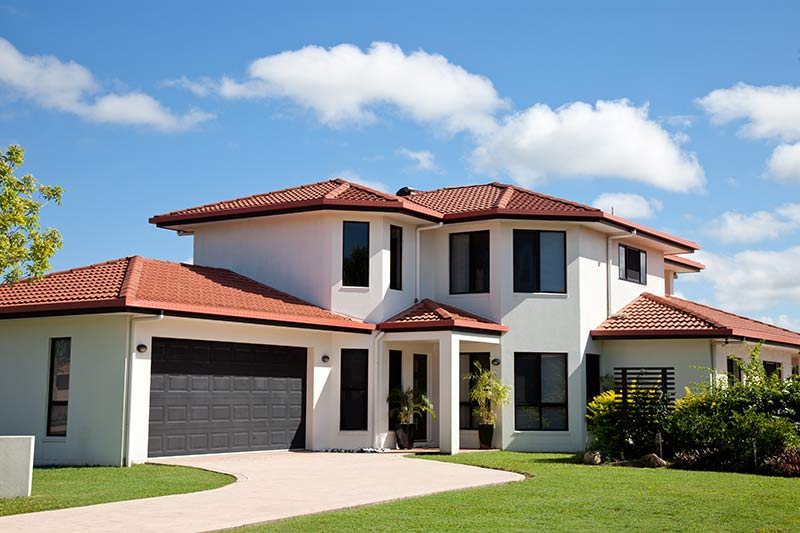
Old homes tend to be less expensive than brand-new homes — they also have more character. Whether you bought an older home for its price or for its many eccentricities, you'll likely have to invest a little more time and effort into an older home than you would with a newer home. While homes from the forties and fifties were built to last in terms of structure and foundation, their plumbing systems can leave something to be desired. Below, we'll cover a few problem areas with the plumbing in decades-old houses so you can check these areas soon after you move into your home. 1. Old Plumbing Appliances While you definitely looked at your home's appliances before you bought the house, you probably didn't note much more than the year they were purchased and how recently they were serviced. Your home inspector may have only checked to see if the appliances were leaking or functional. Now that you've moved in, it's time to take a closer look at your appliances — particularly at your water heater. Unlike other plumbing appliances, you'll use your water heater every day. If the appliance is too old and inefficient, you'll spend much more on utilities than you'd like. Additionally, if your home uses hard water, then calcium deposits build up on your water heater and slow its efficiency. Older models are also subject to corrosion, which causes property damage when the corrosion reaches its tipping point. If your water heater is more than a few years old and hasn't been serviced in a while, then you should flush the tank soon after moving in. If the water heater is more than a decade old, consider replacing the appliance sooner rather than later. 2. Pipes Depending on when your house was built, its pipes were likely made of material no longer used in modern plumbing. For instance, nowadays you won't find a modern house with lead or polybutylene pipes. These types of pipes are either dangerous (like lead) or dangerously prone to leaks and breakage (like polybutylene). Replacing home appliances is simple, but whole-home pipe replacement is costly, invasive and time consuming. After you move in, take the time to figure out what type of plumbing you have. Evaluate exposed pipes and call a plumber if you're not sure what material your pipes are. Lead pipes should be replaced immediately. You can wait a little longer on pipes that aren't dangerous but simply prone to damage, but keep an eye out for leaks, rust in running water and other signs that your pipes are reaching the end of their natural life span. 3. Roots in Sewers If your sewage lines leak underground, they naturally attract water-loving plants and animals. Roots from nearby trees will naturally grow toward the water — eventually breaking into the sewage lines. These cracks cause property damage and pose safety hazards by backing sewage up into your home. If your property has well-established trees, talk to a plumber and an arborist to find out if you need to tackle the problem of your trees' roots. Get in Touch With a Local Plumber When you fix plumbing problems early on, you can get to work on activities that will turn your old house into your new home, like hanging pictures and arranging furniture. If you have questions about your plumbing appliances, need to install new pipes or have sewage problems, the service professionals at F&M Plumbing are here to help. You can contact us 24/7 — and make sure to check out our other blog posts for additional help with your home plumbing.

Copper is the superior choice for piping because of its resistance to corrosion, durability and structural integrity in comparison to other popular materials, like galvanized steel and CPVC (Chlorinated Polyvinyl Chloride) plastic piping. There are multiple reasons to switch from inferior materials to copper piping or to replace existing copper lines with new copper when you need repiping performed. Here are some things to consider when it comes to copper repiping for your home. Why Replace Galvanized Steel Piping With Copper? Galvanized steel piping is found in many older homes, and it is still used because of its structural strength, relative durability and lower cost than copper. However, galvanized steel piping is also vulnerable to corrosion over time and will eventually rust away from the inside surface to the outside because of constant exposure to water. This corrosion will lead to eventual pipe failure and contamination of your drinking water. When corrosion builds inside the pipes to a point that only a pinhole is left in the center of pipes through which water can travel, your water pressure becomes significantly diminished. Toilet tanks, shower walls and sinks will eventually be coated with a rust-colored stain that is difficult to remove as the water dries and sediment remains. The last and most damaging effect of corrosion is pipe failure. This may present itself as small pinholes in pressurized supply pipes or, in the worst case scenario, a gushing torrent of water that floods the lower level of your home. While many homeowners may be tempted to replace galvanized piping with the same material to save money on materials and installation, it’s a much better investment to switch to copper and avoid these issues in the future. Is CPVC Piping a Viable Alternative to Copper? CPVC piping shares the same resistance to corrosion as copper piping, and it is much less expensive. However, it is also less durable and more susceptible to penetration and other damage when other work is being performed nearby. It may simply be struck by a heavy or sharp object that is being carried too close to the line of piping — causing significant damage to the pipe. Additionally, while a house fire is unlikely, it would cause major damage to CPVC piping and leave your home without water. Why Would Copper Piping Need to Be Replaced? While copper piping is resistant to corrosion, it is not totally immune when the local municipal water supply has high pH and low alkalinity levels. This can lead to pitting, which is the development of small areas of corrosion that can lead to pinhole leaks in cases of severe corrosion. Before copper repiping is done, a water softening system also should be installed to lower the pH levels sufficiently to avoid future corrosion issues. Does the Age of Copper Piping Matter? Copper piping installed before 1986 may be connected with lead-based solder, which can leach lead into drinking water. This was the year that the Safe Drinking Water Act was enacted, mandating that only lead-free solder could be used in future drinking water supply lines. Ingestion of lead in sufficient quantities can cause significant neurological and physical damage, especially to children and pregnant adults. These effects are permanent and irreversible, so it is imperative that lead-based solders be removed by replacing pre-1986 copper piping. Lead may also be found in service lines that connect your home to the main municipal supply lines, so you should have a professional plumber check your service line when they install new copper piping. Does your home need repiping? Contact the experts at F & M Plumbing for copper repiping as well as all of your other plumbing needs.
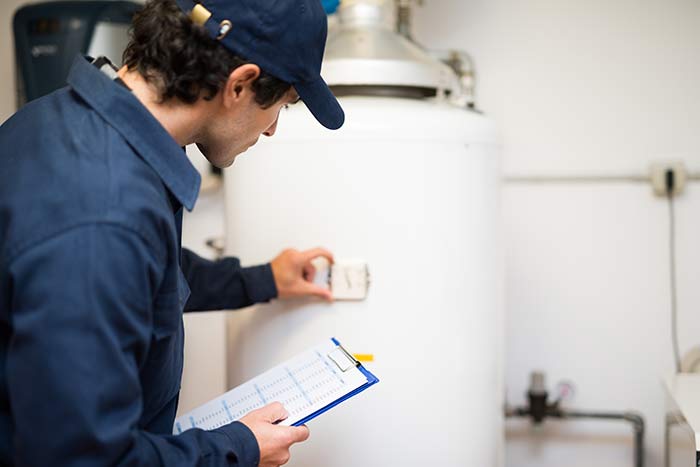
With the latest advancements in water heater technology do you think that water heater tanks are becoming obsolete? With tankless water heaters increasing in popularity, you may be under the impression that standard water heater tanks are no longer a good choice for your home. But while tankless hot water heaters certainly have their advantages, there are still situations in which a water heater tank is the better choice. Before you write me off, take a look at these four scenarios that our master plumbers say you may be better off with a traditional water heater tank. 1. You're on a Budget Water heater tanks are much less expensive than tankless water heaters. Costs vary widely, but tankless units often cost about three times as much as a standard tank unit. Not only is a tankless unit more expensive than a standard tank unit, but installation costs are also typically higher. Chances are, your plumber will need to make some modifications to your home's pipes, along with the electrical system or gas lines, in order to accommodate the new tankless unit. This will add to the installation cost. 2. Installing a Tankless Unit Would Require Extensive Modifications Even if you do have the money set aside for a tankless hot water heater, installing one still may not be worth it if doing so requires making extensive modifications to your home. For instance, your electrical system may not be set up to handle a tankless water heater, so you may need to upgrade your wiring and circuit box. For gas-powered units, you may need to have more gas lines run. In addition to being costly, these modifications can sometimes interfere with your home's layout. For instance, your plumber may need to make a hole in the wall to run a gas line or new pipe. This takes time, so you may be without hot water for a few days. Before you decide to upgrade to a tankless water heater, ask your plumber what modifications must be made to install it. You may find that sticking to a hot water tank is easier. 3. You Use a Lot of Hot Water One of the main reasons why homeowners opt for a tankless unit is because they are more energy-efficient. But while saving energy is good for your wallet and for the environment, a tankless unit may not actually save you as much money as you think. According to the U.S. Department of Energy, tankless units are only 8–14 % more efficient for homeowners who use more than 86 gallons of hot water per day. So, if you use a lot of hot water, the money you save may never make up for the increased upfront cost of a tankless hot water heater. In your situation, a tank-style unit may be better choice in a financial sense. 4. You Want to Use Multiple Hot Water Taps Simultaneously Tankless units have the benefit of offering a never-ending supply of hot water, but they can only heat a certain volume of water at once. If you turn on two hot water taps at the same time, one of them will run cold. If you want the ability to run hot water at two or more taps, you either need to install multiple tankless units--which can get expensive--or stick with a hot water tank. If you are worried about running out of hot water before everyone is done showering, you can always just have a larger tank installed. The average shower uses about 20 gallons of water, so an 80-gallon tank should allow four people to shower in a row without issues. If you're on a tight budget, use a lot of hot water and don't want to make extensive modifications to your home, there's no reason to switch to a tankless hot water heater. A hot water tank will continue to suit your needs perfectly well. Talk to your plumber to learn more about the best hot water tanks for your family's needs.

Face it, not everyone knows as much about plumbing as they’d like. However, we’ve all had plumbing emergencies or nagging problems but aren’t sure what is wrong. Troubleshooting common plumbing problems isn’t as hard as you’d think. Running Toilet A running toilet is not only annoying, it can cost you money in water bills if you leave it unresolved. There are several steps to remedying this problem: Check the water level – turn off the water supply and see if the water level drops below the flapper. check the flapper – your flapper could be leaking and needs replaced. Check the fill valve – see if the water stops when you lift the float arm. Check the fill tool – the fill tube could be disconnected or broken. Clogged Drain Be it a toilet, sink or tub, a clogged drain is pretty easy to spot: water is slowly draining or not draining at all. Take your trusty plunger and try to unclog the train that way. If that doesn’t work, you can try a store-bought, system-safe liquid drain cleaner. Water Heater Failure Waking up in the morning to cold water coming out of your shower can ruin your day. Fortunately, you can easily identify if this is a simple water heater problem or if it requires more attention. For electric water heaters, check to make sure the heater has power. This could be a fuse problem or the heater needs reset. For gas water heaters, make sure the pilot light is lit or that gas is flowing into the tank. Just because you may have diagnosed the problem does not mean you need to strap on a tool belt and fix it. If you have a plumbing emergency , call F&M Plumbing in Pasadena, California, to come check it out! 626-296-1060














